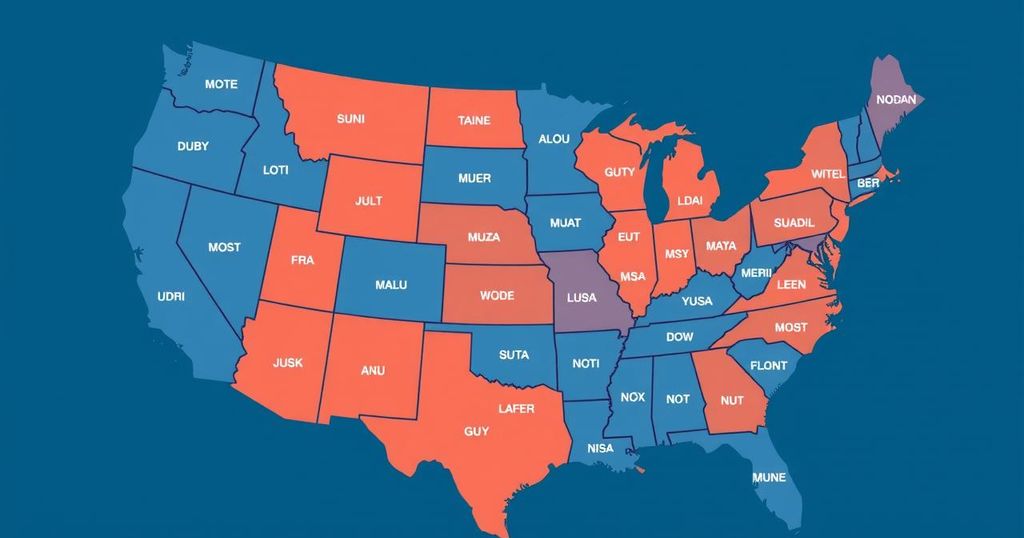In the recent elections, supporters of Kamala Harris encountered significant challenges in persuading voters influenced by Trump’s compelling narrative. Economic perceptions, personal biases against Harris, and entrenched gender stereotypes played crucial roles in shaping voter decisions. Despite efforts to highlight Harris’s strengths, Trump’s prevailing influence proved too substantial to overcome in the campaign’s short duration.
In a week marked by significant events in United States political affairs, many supporters, including myself, were disheartened after dedicating extensive hours advocating for Kamala Harris over the incumbent, Donald Trump. Conversations with voters revealed clear trends influencing their decisions and underline why Trump garnered substantial support. Primarily, a substantial number of voters centered their judgments on economic conditions. Despite the reality of increasing wages and decreasing unemployment rates, many voters remained skeptical, largely due to their direct experiences with inflation. Local business owners frequently cited rising costs of essential goods, which overshadowed Democratic narratives of economic growth. Unfortunately, the messaging from the Harris campaign appeared ineffective, as voters gravitated towards Trump’s reassurances rather than the achievements touted by Harris and Tim Walz. Another segment of voters evaluated Harris on a personal level, appreciating her credentials yet expressing concerns stemming from the Trump campaign’s rhetoric. Several individuals categorized her as “communist” or “clueless,” while others pointed towards her tenure as San Francisco’s district attorney to question her firmness on law enforcement. The Trump campaign effectively painted Harris as both excessively lenient and excessively harsh, resulting in a dissonance of opinion that was challenging to rectify in a short campaign period. Throughout my outreach efforts, many respondents expressed unfamiliarity with Harris, indicating a lack of awareness that could have hindered her visibility among potential supporters. Despite suggestions of an open primary to distinguish herself from President Biden, no voters conveyed a desire for an alternative candidate. This indicates a limited understanding of her policies and a potential disconnect between her objectives and public perception. Additionally, gender biases emerged prominently during my conversations. While numerous voters, including women, expressed admiration for her competence, many harbored doubts regarding America’s readiness for a female leader. Some articulated their inability to envision a woman effectively occupying the presidency, with one individual stating, “you do not see women building skyscrapers.” Such sentiments frequently served as formidable barriers that stymied productive dialogue about her qualifications. Intriguingly, discussions around fiscal policies, such as higher taxes on wealthier Americans, were notably absent during my interactions, as was the situation in Gaza, which was raised minimally. This lack of engagement suggests that the notion of Harris’s alignment with progressive ideologies may be overstated, as the electorate recently demonstrated a preference for Trump’s contrasting approach. Ultimately, the primary factor behind the setbacks faced by Harris and Walz can be summarized as Trump’s undeniable influence. His ability to captivate audiences with compelling, albeit sometimes controversial, rhetoric evidently overrode substantial concerns regarding his governing style and commentaries on societal issues. This dynamic warrants exploration as scholars investigate the stimuli behind electoral behavior in future studies.
This analysis reflects on the political landscape of the recent US elections, emphasizing the challenges faced by Kamala Harris in drawing voter support amidst the strong influence of Donald Trump. The narrative reveals significant trends observed during outreach efforts by volunteers, detailing how perceptions of economic circumstances, personal qualifications, and gender biases impacted voter decisions. Understanding these factors is crucial in comprehending why certain candidates succeed or falter in the eyes of the electorate.
The examination of voter interactions highlights that economic perceptions, candidate profiles, and ingrained societal attitudes significantly influenced the electoral outcomes. Voters exhibited a strong inclination toward Donald Trump, indicating a challenge for Kamala Harris to effectively counter multifaceted criticisms and narratives within a limited timeframe. This reflection underscores the necessity for political campaigns to address voter concerns sincerely while navigating complex societal dynamics that can sway public opinion.
Original Source: www.theguardian.com






